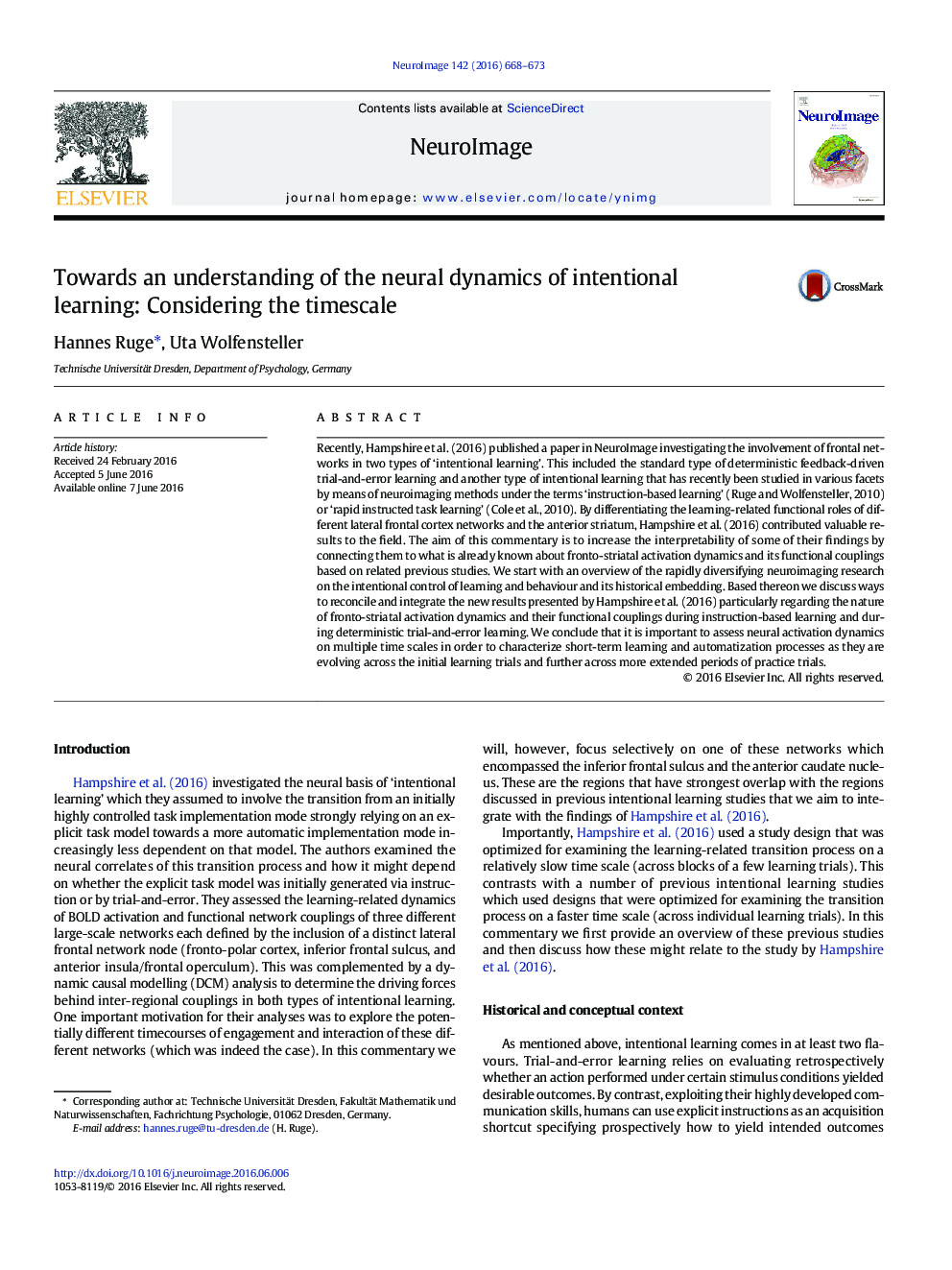| Article ID | Journal | Published Year | Pages | File Type |
|---|---|---|---|---|
| 5631471 | NeuroImage | 2016 | 6 Pages |
Recently, Hampshire et al. (2016) published a paper in NeuroImage investigating the involvement of frontal networks in two types of 'intentional learning'. This included the standard type of deterministic feedback-driven trial-and-error learning and another type of intentional learning that has recently been studied in various facets by means of neuroimaging methods under the terms 'instruction-based learning' (Ruge and Wolfensteller, 2010) or 'rapid instructed task learning' (Cole et al., 2010). By differentiating the learning-related functional roles of different lateral frontal cortex networks and the anterior striatum, Hampshire et al. (2016) contributed valuable results to the field. The aim of this commentary is to increase the interpretability of some of their findings by connecting them to what is already known about fronto-striatal activation dynamics and its functional couplings based on related previous studies. We start with an overview of the rapidly diversifying neuroimaging research on the intentional control of learning and behaviour and its historical embedding. Based thereon we discuss ways to reconcile and integrate the new results presented by Hampshire et al. (2016) particularly regarding the nature of fronto-striatal activation dynamics and their functional couplings during instruction-based learning and during deterministic trial-and-error learning. We conclude that it is important to assess neural activation dynamics on multiple time scales in order to characterize short-term learning and automatization processes as they are evolving across the initial learning trials and further across more extended periods of practice trials.
